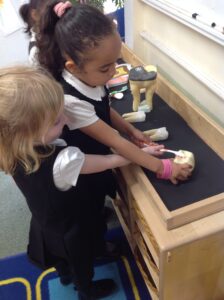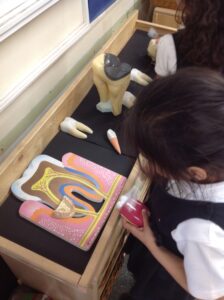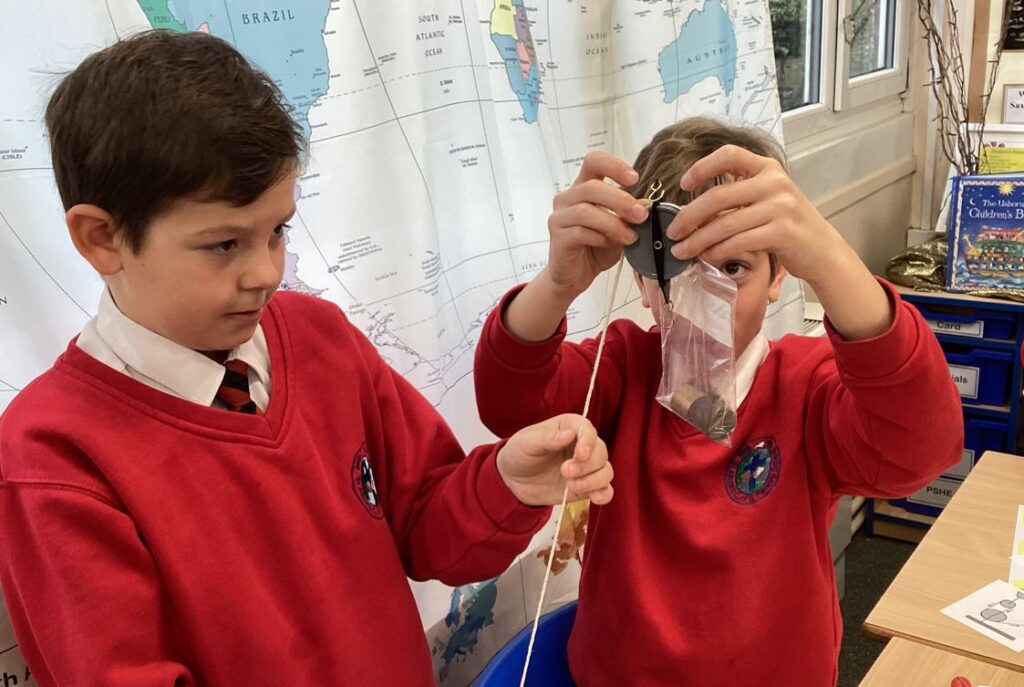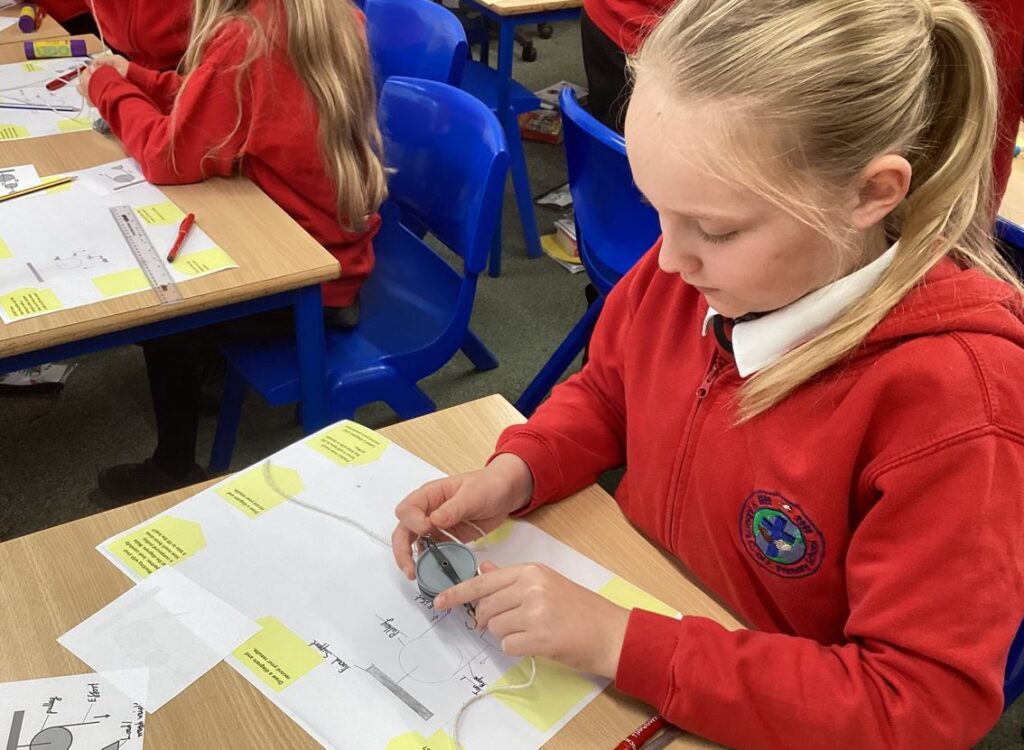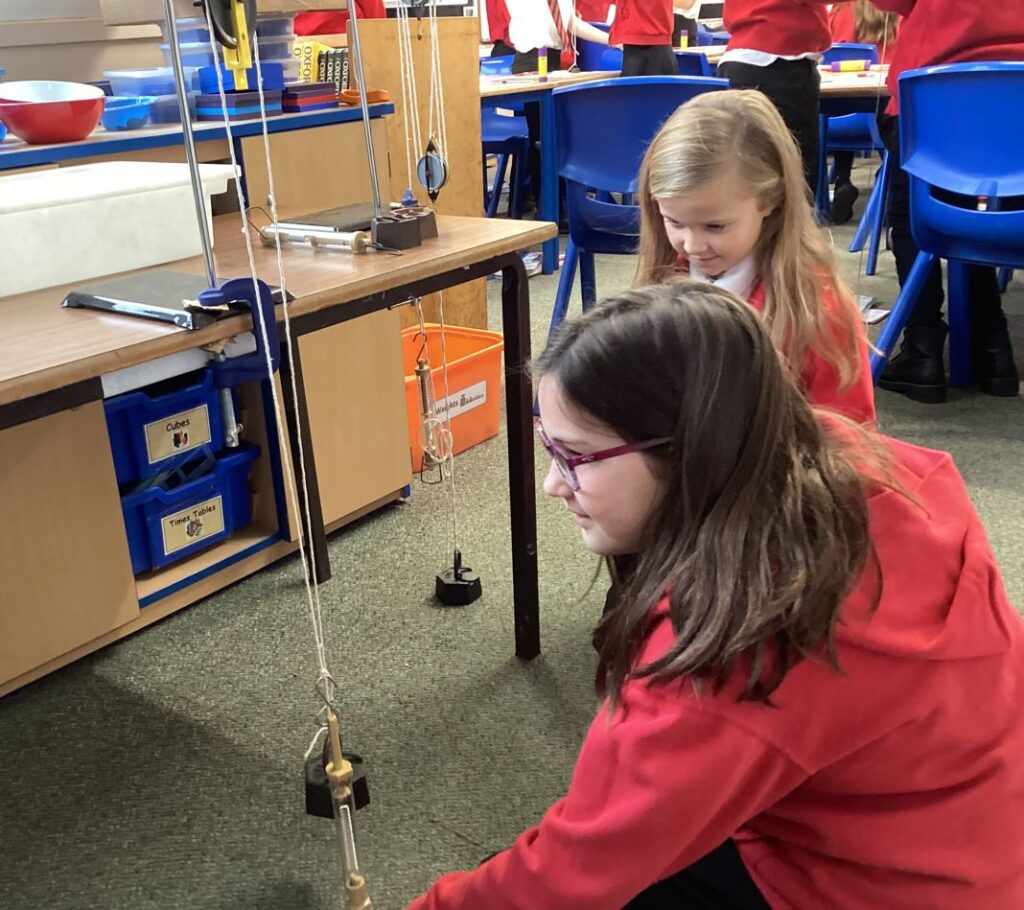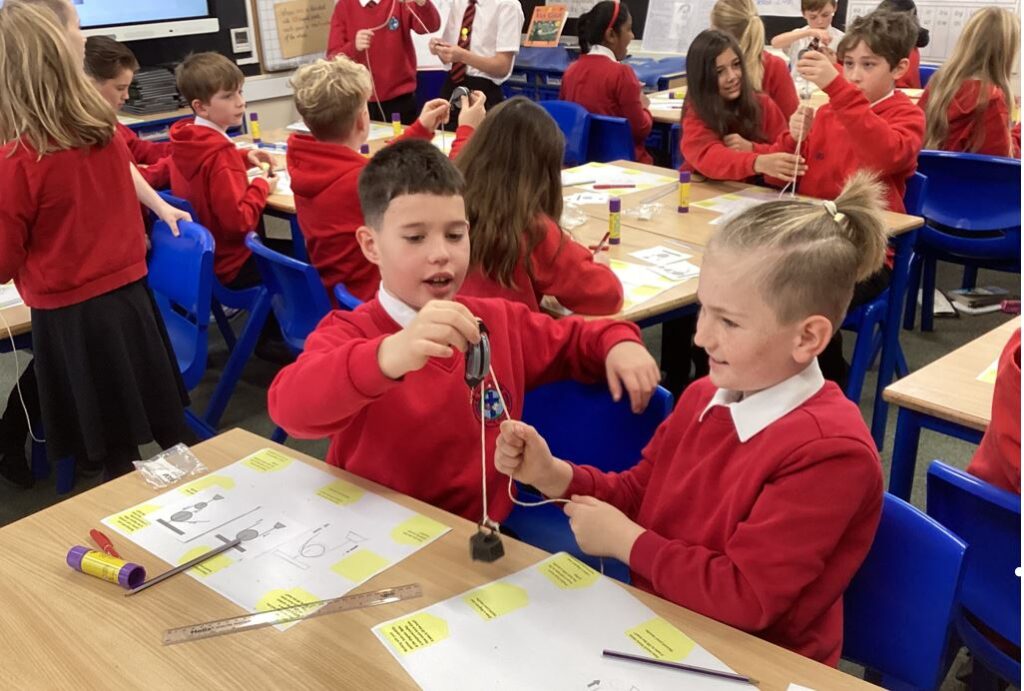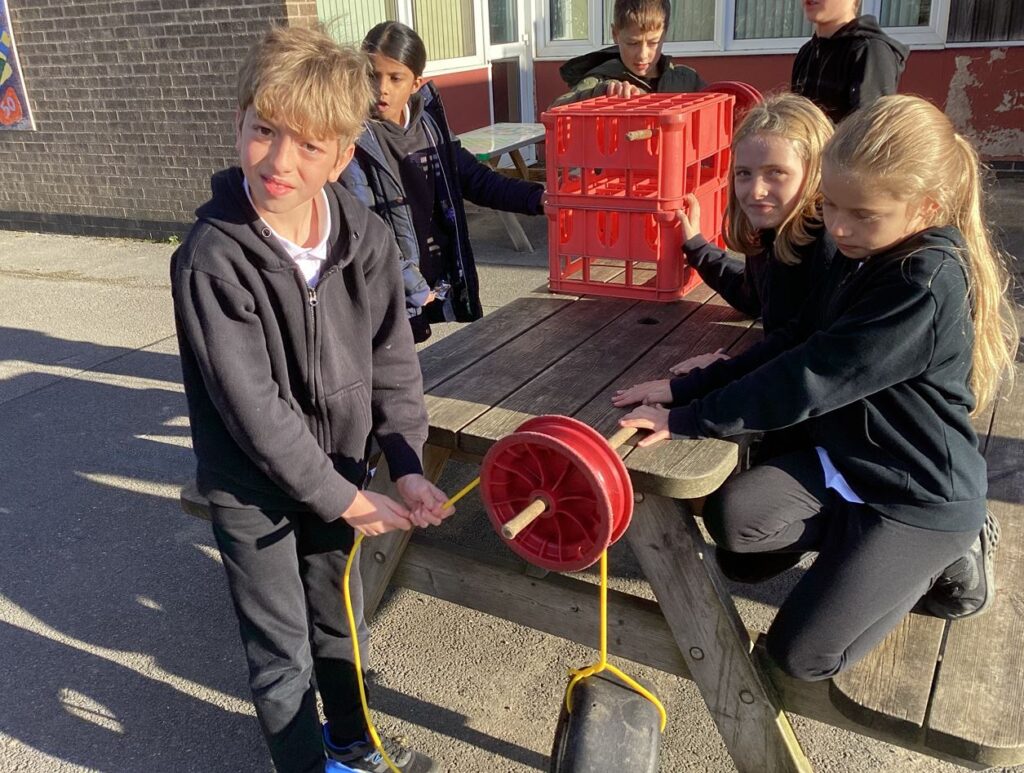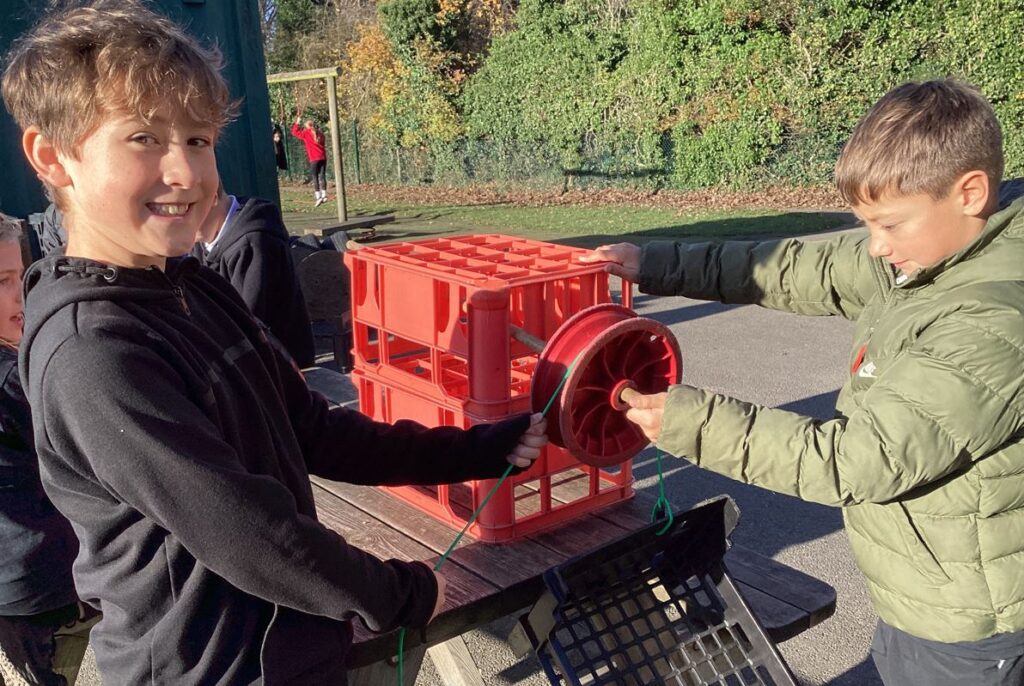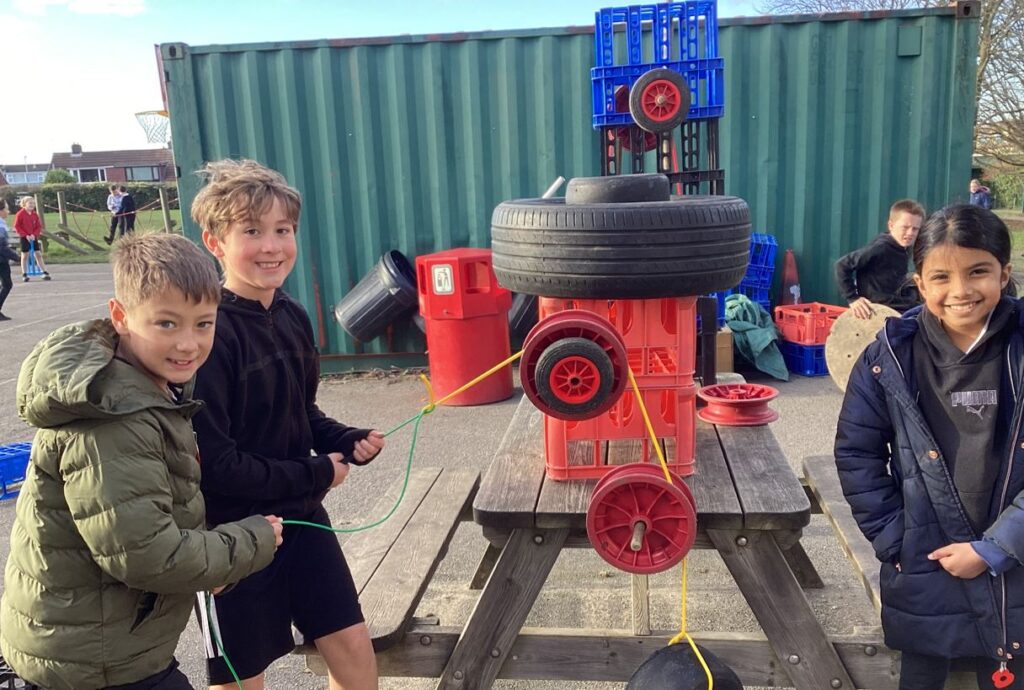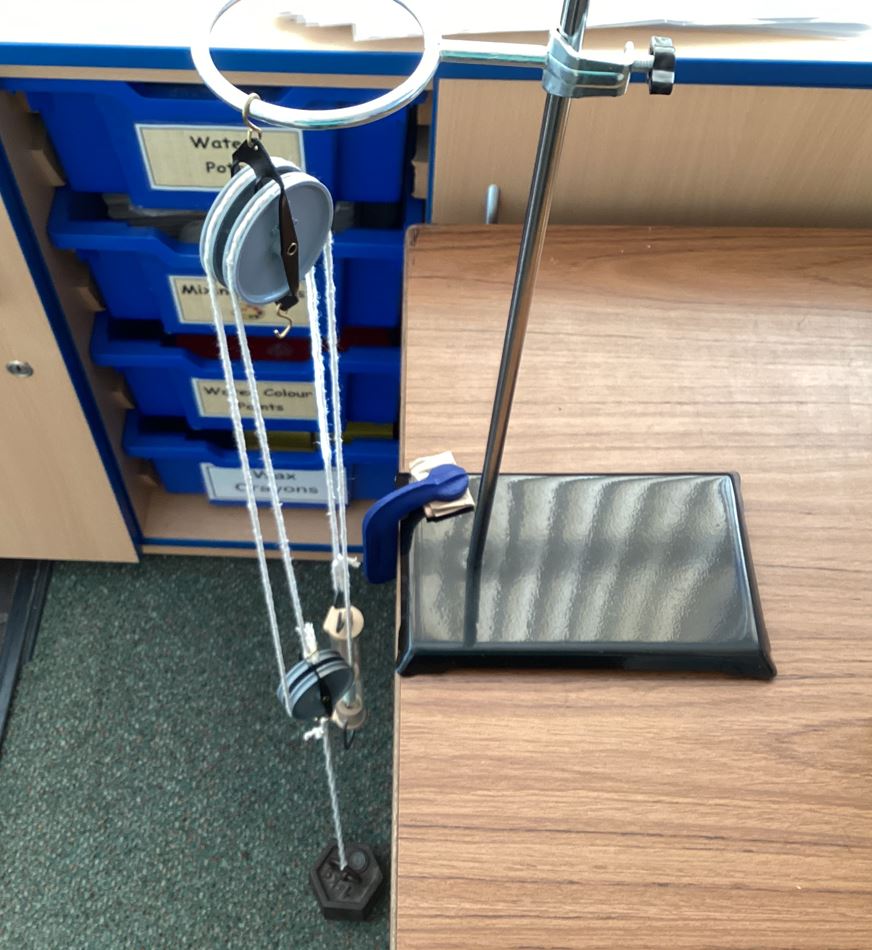
Some mechanisms, including levers, pulleys and gears, allow a smaller force to have a greater effect.
A pulley is simply a collection of one or more wheels over which you loop a rope to make it easier to lift things.
The more wheels you have, and the more times you loop the rope around them, the more you can lift.
We have been making our own pulleys and recording how much force is needed to lift a load.
Some children even constructed pulley systems outside at break time.

Yesterday, Year 5 continued finding out about forces. They had a piece of card to hold in front of them and ran across the playground and back. This started our discussion on air resistance.
Air pushes back against the piece of card so it is harder to run. This force is called air resistance.
We dropped two pieces of paper the same size, one scrunched up and one not.
The scrunched up piece of paper, fell more quickly than the flat piece of paper.
This is because the surface area of the scrunched up piece of paper is smaller and so there is less air resistance.
Today in science, year 3 learnt about igneous rocks.
We used white and milk chocolate chips to show rocks in the ground. We put the chips into a bowl and put the bowl into hot water. This was like rocks being melted at the earth’s core.
The chips melted and blended together. This showed the minerals had melted. We poured the melted chocolate out which was like the molten rock coming out from inside the earth.
The molten rock solidifies and forms a new rock, called igneous rock.
In Science, year 3 have been busy making sedimentary sandwiches and metamorphic chocolate.
The different parts of the sedimentary sandwiches represented the different sediments that make up sedimentary rocks, such as dead plants, animal bones, dust and other rocks.
For metamorphic rocks, we used white and milk chocolate to help us understand how different rocks merge to form metamorphic rocks through heat.

What happens to a ball when we drop it?
We discussed the Hypothesis:
When I drop a large ball and a small ball from the landing, the balls will hit the floor at the same time.
Some of us thought that a large ball would fall faster than a small ball, some of us thought the small ball would fall faster. Some of us thought the balls would fall at the same rate.
We dropped the balls and discussed the results.
Galileo discovered that everything falls at the same speed. In 1658 he dropped two balls of different masses from the leaning tower of Pisa. He discovered they hit the ground at the same time.

Recently in Year 5, we have been observing the life-cycle changes in a variety of plants. We began by retrieving what we knew about seed formation and seed dispersal from our learning in Year 3. We discussed how different plants dispersed their seeds.
Dispersal is the spreading of things over a wide area. Dispersal of seeds is very important for the survival of plant species. If plants grow too closely together, they have to compete for light, water and nutrients from the soil. Seed dispersal allows plants to spread out from a wide area and avoid competing with one another for the same resources.
When dandelion seeds break free from the flower head, these bundles of hairs catch the wind and carry their seeds.
The Himalayan balsam seedpods explode when touched or shaken.
Today in science, year 3 continued their unit on rocks. Remembering how we classified and grouped the sweetie rocks from earlier in the term, we used a variety of real rocks which we grouped into different categories according to their characteristics. These included characteristics such as smoothness, size, shine, etc.

